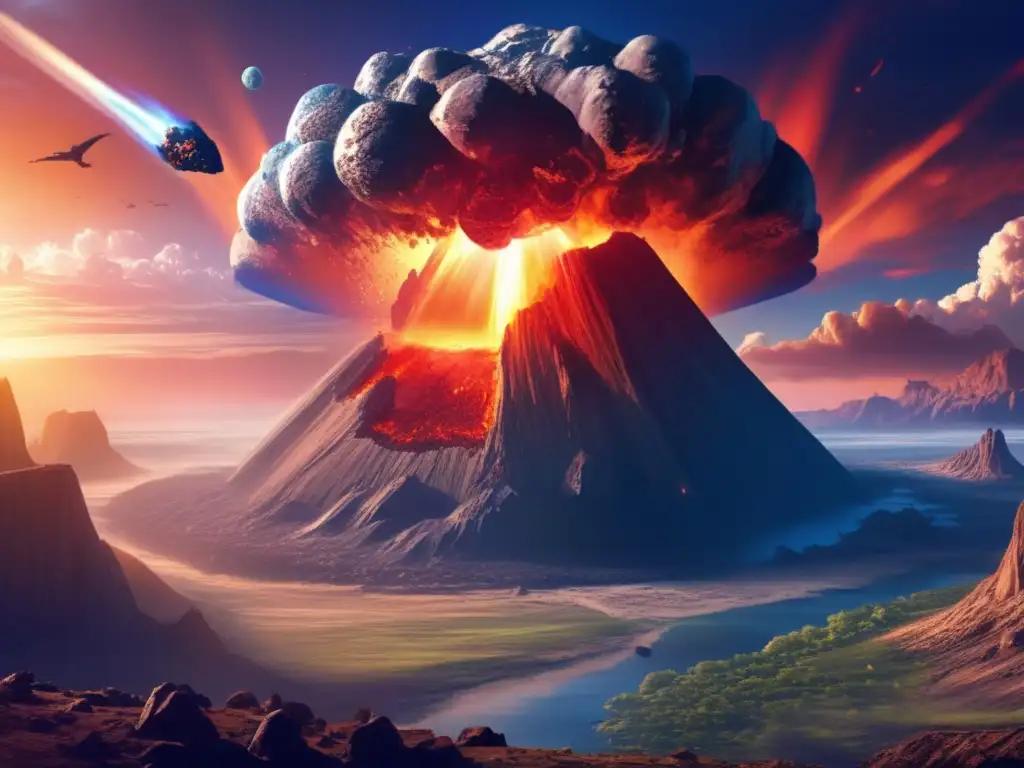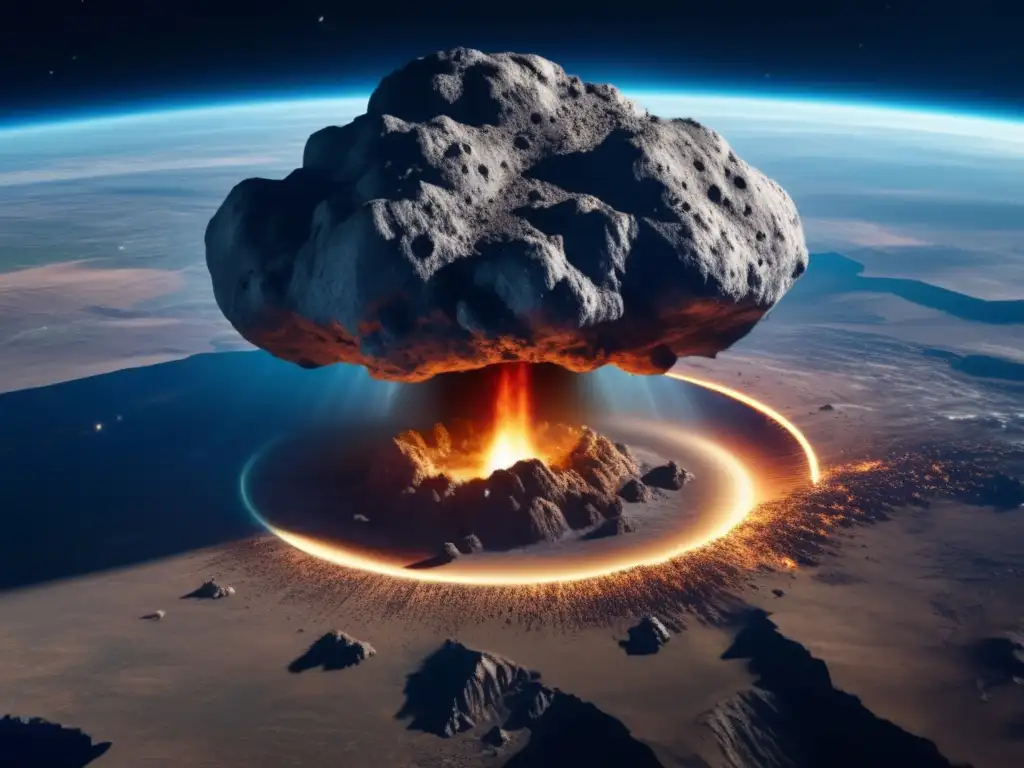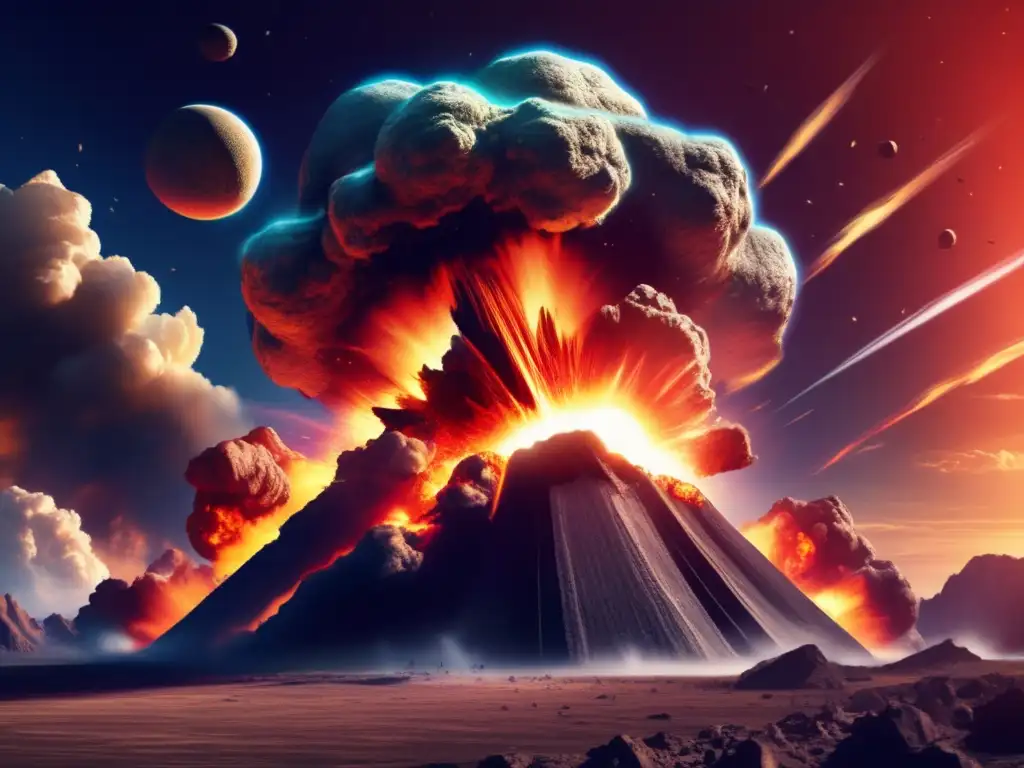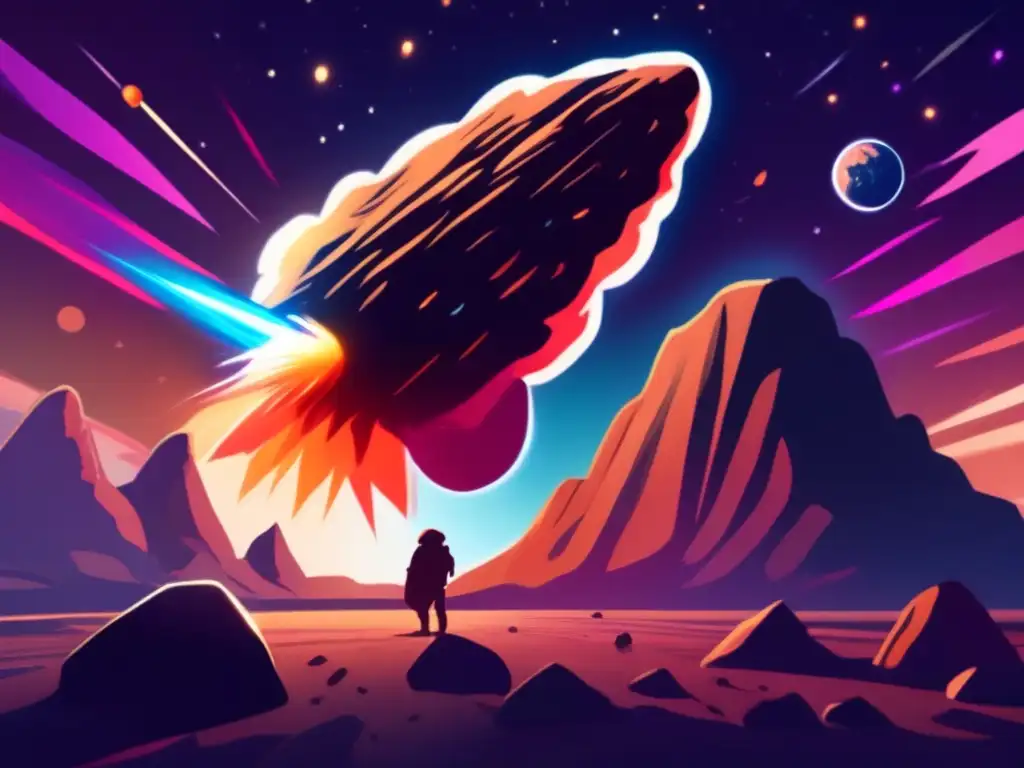An Asteroid's Tale: The Extinction Of Dinosaurs

Introduction
The extinction of dinosaurs has been a fascinating subject of study for scientists and enthusiasts alike. For years, the question of what caused their extinction has remained a mystery. It wasn't until the 1980s that a theory was put forth suggesting that an asteroid impact was responsible for the disappearance of our beloved prehistoric friends.
Since then, several pieces of evidence have emerged to support this theory. In this article, we will explore the events leading up to the asteroid impact and its aftermath. We'll also examine the impact's effects on the planet and the creatures that lived on it at the time.
The Asteroid Impact

The Pre-Impact Environment
65 million years ago, the world was a very different place. The late Cretaceous period was marked by a warm and humid climate, with shallow seas covering much of the planet. Large herbivorous dinosaurs roamed the land, while pterosaurs and marine reptiles ruled the sky and sea, respectively.
However, things were not stable in this pre-impact environment. The climate was changing, and several groups of organisms were already in decline. These included the pterosaurs and certain types of marine reptiles. But nothing could have prepared these creatures for what was about to happen.
The Impact Event
About 66 million years ago, a massive asteroid, estimated to be about 10 km in diameter, slammed into what is now the Yucatan Peninsula in Mexico. The impact released an enormous amount of energy, equivalent to billions of atomic bombs, creating a crater over 180 km wide and 20 km deep.
The force of the impact caused earthquakes, tsunamis, and global wildfires. The asteroid's impact also kicked up massive amounts of dust and debris, blocking out the sun's rays and causing a sudden drop in temperature around the world. This event is known as the K-T extinction event.
The Aftermath
The immediate aftermath of the impact was devastating for life on Earth. The dust and debris thrown up into the atmosphere caused global darkness that lasted for months, if not years. Plants could no longer photosynthesize, leading to a disruption of the food chain. Many species of plants and animals went extinct, including the dinosaurs and the pterosaurs.
In the end, it took millions of years for life on Earth to recover from the impact. The extinction of the dinosaurs led to the dominance of mammals, which eventually gave rise to humans.
The Science behind the Asteroid Impact

What Evidence Supports the Asteroid Impact Theory?
The theory that an asteroid impact caused the extinction of the dinosaurs is supported by several lines of evidence. These include:
- The discovery of the Chicxulub impact crater in Mexico, which is roughly the same size and age as the K-T boundary.
- The presence of a layer of iridium-enriched sediment at the K-T boundary, which is rare in Earth's crust but common in asteroids.
- The discovery of shocked quartz and other impact-related minerals in rocks dated to the K-T boundary.
How Do We Know When the Asteroid Impact Happened?
The age of the K-T boundary has been determined using several radiometric dating methods, including uranium-lead and argon-argon dating. These methods have placed the impact event at around 66 million years ago, give or take a few hundred thousand years.
Could the Dinosaurs Have Survived the Asteroid Impact?
It's difficult to say for sure whether the dinosaurs could have survived the asteroid impact. The immediate effects of the impact would have been devastating, but some species may have had a chance of survival if they were able to adapt to the new environment.
However, other factors may have contributed to their downfall. For example, volcanic activity was already on the rise at the time of the impact. This activity would have contributed to the overall instability of the environment, making it even harder for the dinosaurs to survive.
Frequently Asked Questions

-
Is it possible that something else caused the extinction of the dinosaurs?
While there are other theories about what may have caused the extinction of the dinosaurs, the evidence supporting the asteroid impact theory is currently the most compelling. However, research in this area is ongoing, and new evidence may emerge in the future.
-
What happened to the animals that lived in the oceans during the asteroid impact?
The impact had a profound impact on the ocean ecosystem as well. Many species of marine reptiles and ammonites went extinct, while others, such as sharks and sea turtles, survived and eventually thrived in the post-impact world.
-
Did any animals survive the asteroid impact?
Yes, some species were able to survive and adapt to the new environment. These included ancestors of modern-day birds, mammals, and reptiles.
-
Could an asteroid impact like this happen again?
Yes, it's possible. While the likelihood of another asteroid impact on the scale of the K-T event is low, it's still a possibility. Scientists are currently working on developing methods to detect and prevent potential asteroid impacts in the future.
-
What impact did the extinction of the dinosaurs have on the evolution of life on Earth?
The extinction of the dinosaurs allowed mammals to become the dominant group of animals on Earth, eventually leading to the emergence of humans. Without the asteroid impact, the course of evolution on our planet would have been very different.
Conclusion
The extinction of the dinosaurs is an event that has captured the imaginations of scientists and enthusiasts alike for decades. Thanks to scientific research and advancements in technology, we now have a better understanding of what caused their disappearance from our world.
The asteroid impact theory is currently the most widely accepted explanation for the extinction of the dinosaurs, and the evidence supporting it is significant. The impact had a profound impact on life on Earth, forever changing the course of evolution.
As we continue to explore our planet and the universe beyond, it's important to remember the lessons of the past. The asteroid impact that wiped out the dinosaurs serves as a stark reminder of just how fragile and interconnected life on Earth truly is.
Additional Resources

- National Geographic - How Did Dinosaurs Die? A Simple Asteroid Impact Is Increasingly Challenged
- American Museum of Natural History - Theory of Asteroid Impact
- NASA - Frequently Asked Questions About Asteroid Impacts
 Asteroids: The Grim Reapers Of The Dinosaur World
Asteroids: The Grim Reapers Of The Dinosaur World Earth's Most Wanted: The Asteroid That Killed The Dinosaurs
Earth's Most Wanted: The Asteroid That Killed The Dinosaurs The Sky Is Falling: The Asteroid Theory Of Dinosaur Extinction
The Sky Is Falling: The Asteroid Theory Of Dinosaur ExtinctionIf you want to discover more articles similar to An Asteroid's Tale: The Extinction Of Dinosaurs, you can visit the Asteroids and Dinosaurs category.
Leave a Reply

Articulos relacionados: